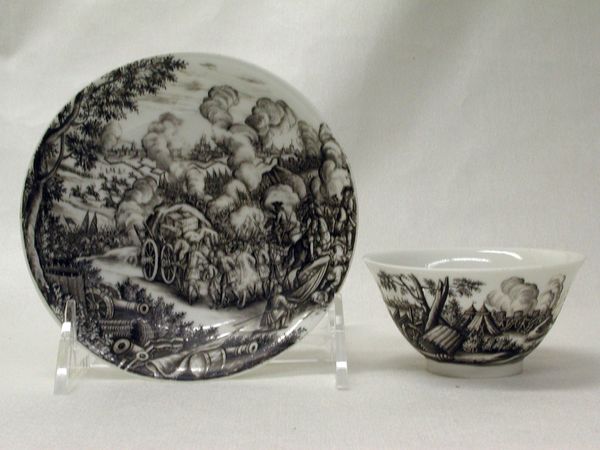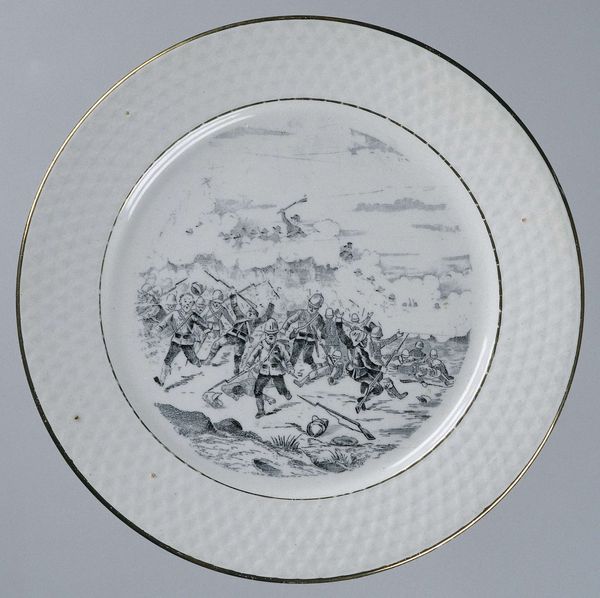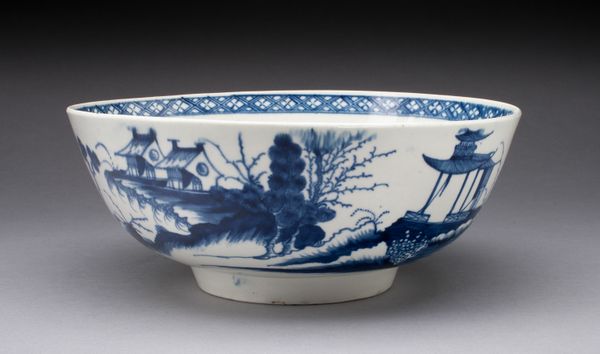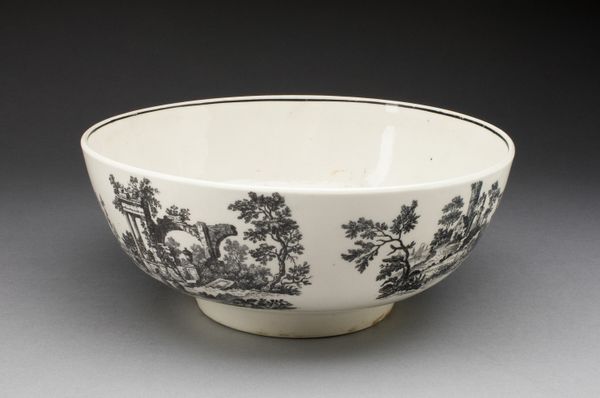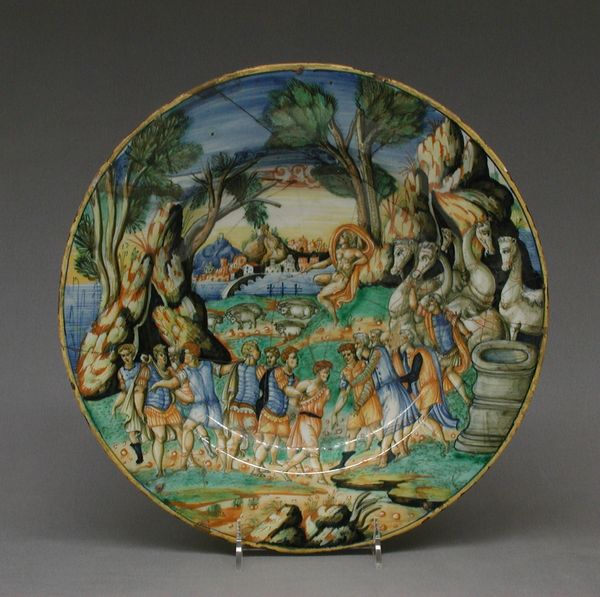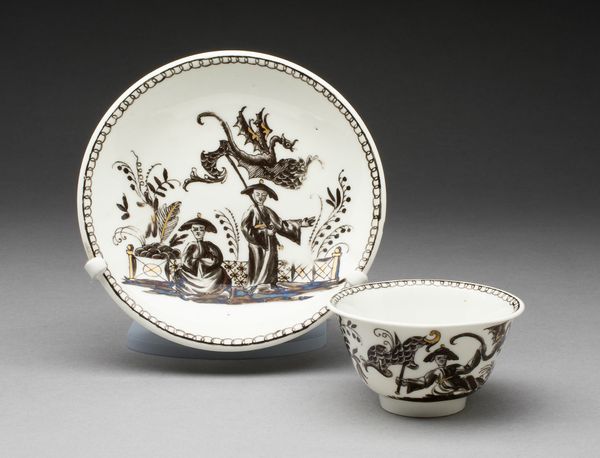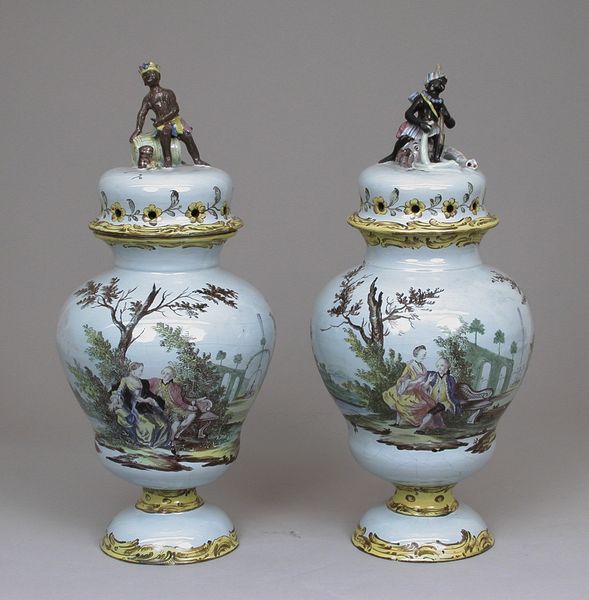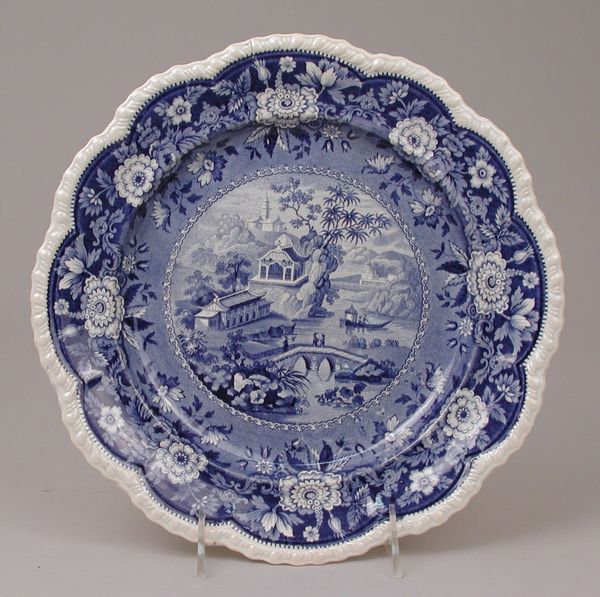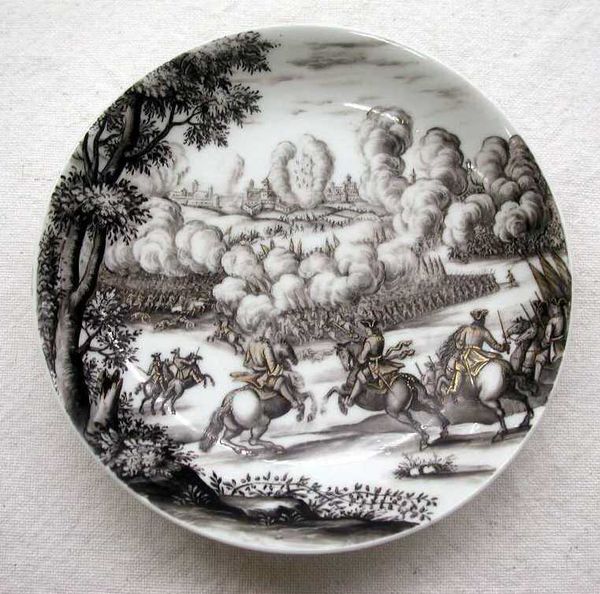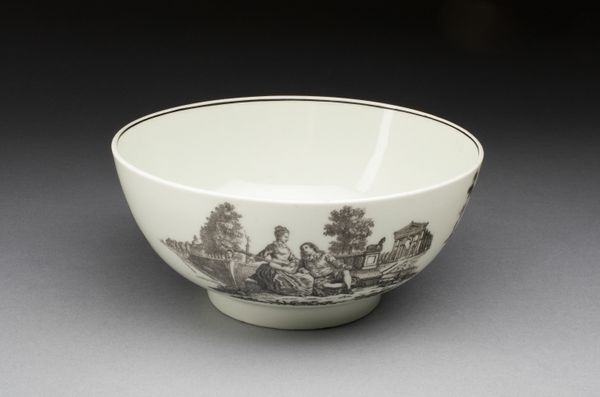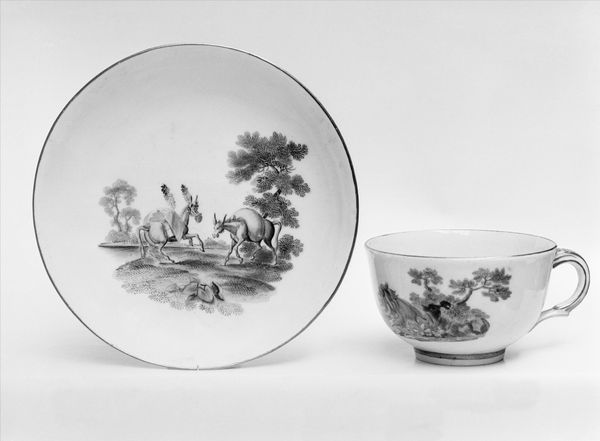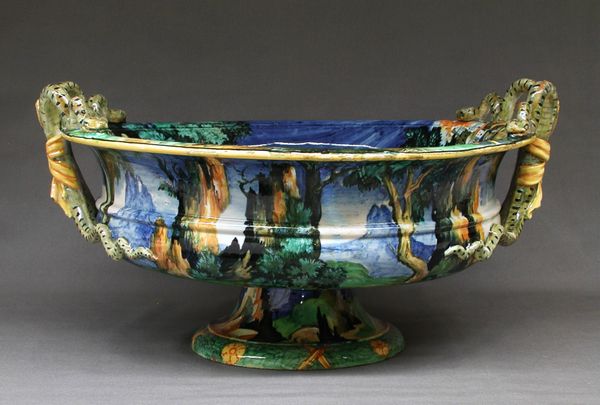
ceramic, porcelain, sculpture
#
sculpture
#
landscape
#
ceramic
#
porcelain
#
sculpture
#
genre-painting
#
history-painting
#
decorative-art
#
rococo
Dimensions: Overall (teabowl .239): 1 5/8 × 3 1/4 in. (4.1 × 8.3 cm); Diameter (saucer .240): 4 3/4 in. (12.1 cm)
Copyright: Public Domain
Curator: Here we have a “Teabowl and saucer” made between 1715 and 1730 by the Meissen Manufactory, currently held at the Metropolitan Museum of Art. Editor: The monochromatic scene creates such a striking contrast. It’s almost unsettling to see such violence depicted on something so delicate. Curator: Absolutely, and this porcelain object begs the question: why depict such a battle on something used for consumption? Meissen porcelain held considerable status at the time and was highly sought-after. Editor: The material speaks to a level of social privilege, a very delicate luxury good, and there is tension in decorating an item for personal use with war scenes. But looking at it formally, the circular composition really draws the eye into the melee of combat. It’s so dynamic! Curator: It also begs considering the labor of these works of art, especially considering that the landscape depicted seems to mimic prints of the time. The people who made this are translating artistic designs into a manufactured, and extremely delicate object. Editor: You know, examining this piece, one might be interested in the symmetry inherent in the duplication across the cup and the plate, creating this repeated theme for contemplation and admiration, thus prompting discussion about form. Curator: The question of why battles became a source of ornamentation also cannot be understated; it suggests the consumer market prized war’s aesthetics over an understanding of its true human cost, rendering this set a marker for upper class values. Editor: And by extension, these swirling smoke formations are contrasted with regimented lines of men, thus further enhancing dramatic effect and the emotional punch these porcelain pieces generate, though one has to admire its pure material nature in of itself! Curator: Yes, its place and status in society underscores just how much artwork becomes intertwined with social trends, commerce and luxury. This tea set reminds us that aesthetics have concrete meaning and weight, tied to production and consumption. Editor: So much to consider when what seems like a harmless beverage item opens avenues to observe intrinsic value as much as production concerns. Thanks for a broader view.
Comments
No comments
Be the first to comment and join the conversation on the ultimate creative platform.
